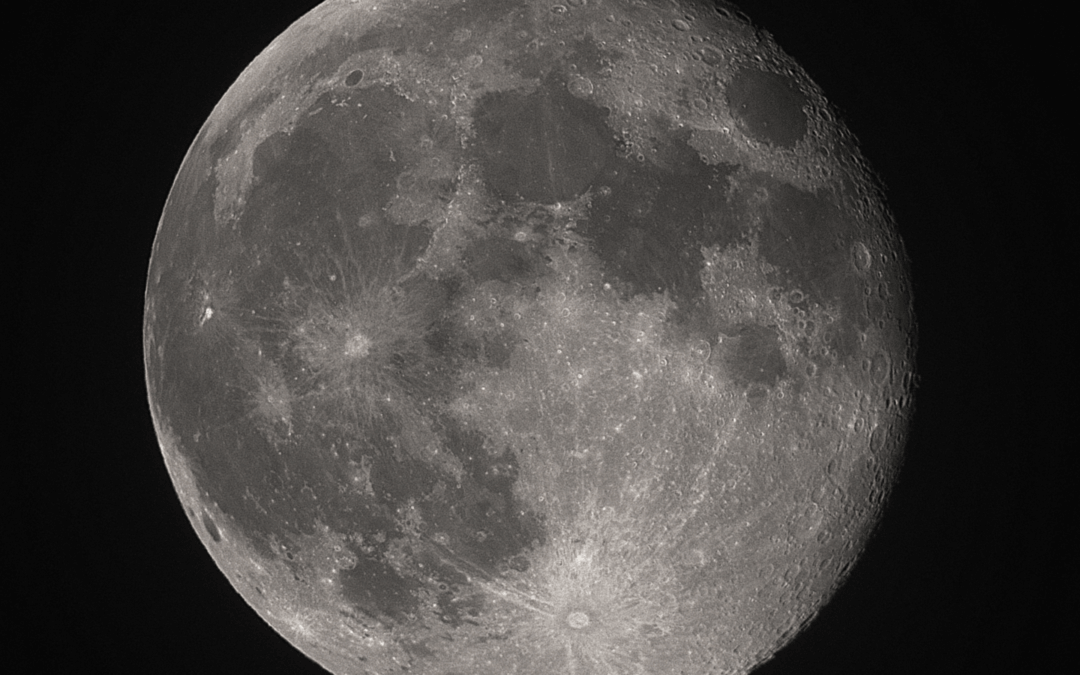Step outside on a crisp October evening, and you’ll find the heavens adorned with celestial wonders that seem tailor-made for the Halloween season. From eerie-shaped clusters to cosmic apparitions, this month’s night-sky spectacles will send shivers down your spine.
Follow our Halloween observing guide to enjoy some of these boo-tiful deep sky objects as you prepare for tricks, treats, and Unistellar telescopes!
All-Level Targets
These bright objects are easy for anyone to observe, and some are visible from both hemispheres!
Wizard Nebula (NGC 7380)
If you’ve ever noticed the “man on the moon,” you’ll be glad to meet the wizard in the clouds! Clouds of cosmic gas and dust, that is. With its wispy tendrils, the Wizard Nebula cradles a young star cluster that has been forming from the material that makes up this star-forging region. These new stars have carved out a shape in the surrounding nebula that appears to be a wicked wizard’s face. Can you see it? Try from the Northern Hemisphere!
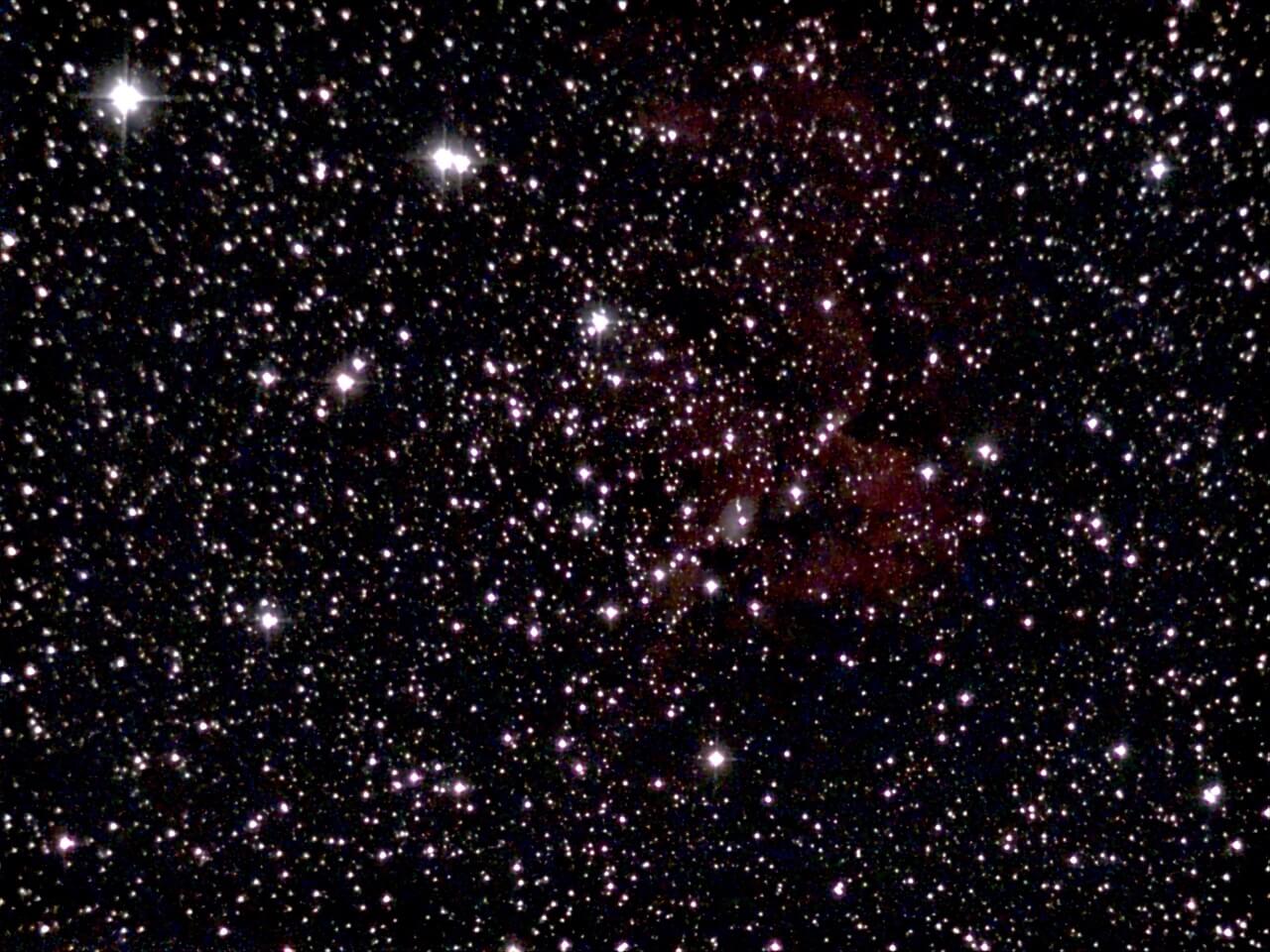
The Wizard Nebula imaged and processed by John Bradley.
Tarantula Nebula
The Tarantula Nebula, residing in the Large Magellanic Cloud galaxy, might give you astronomical arachnophobia. This vast cloud of gas and dust is illuminated by the fierce light of some of the hottest and most massive new stars known to us humans. The stars’ powerful radiation clears out all but the most dense clouds and casts an eerie, spider-like silhouette against the cosmic canvas. Spot this creepy creature from the Southern Hemisphere.

The Tarantula Nebula, imaged by the Unistellar team.
Ghost Bush Cluster (NGC 6939)
The Ghost Bush Cluster, NGC 6939, is an open star cluster located in the constellation Cepheus and is best seen from the Northern Hemisphere. It’s quite an old open cluster at over 1 billion years of age, but it and its nearby neighbor – the Fireworks Galaxy – still make a striking pair.
Why is it sometimes called the Ghost Bush Cluster? Well, Halloween is for mysteries after all. Likely it was named for the stunning (but slightly spooky) plant!
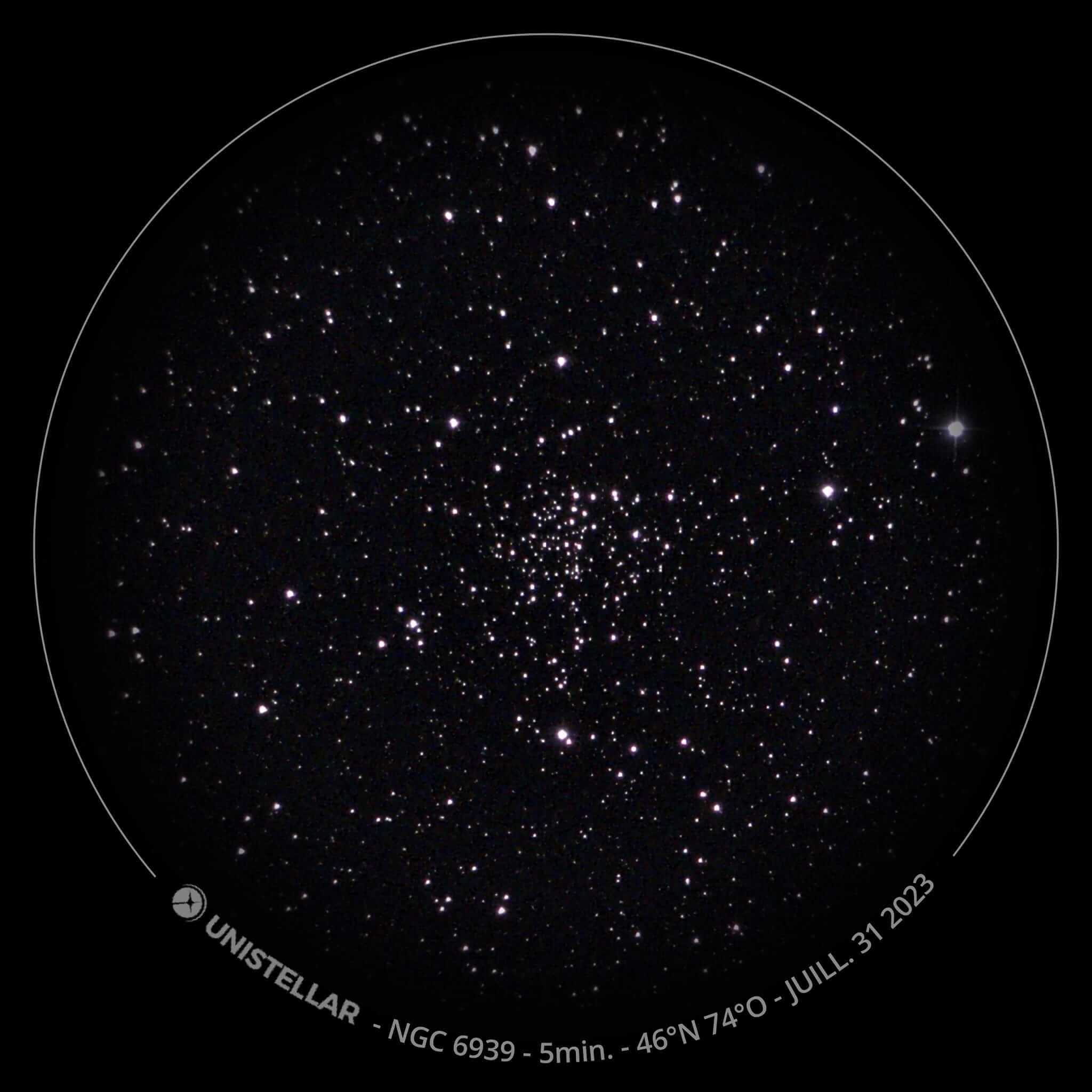
The Ghost Bush Cluster imaged by Unistellar observer Michel Dubeau.
Owl Cluster (aka E.T. Cluster)
The E.T. cluster, better known as the Owl Cluster, is an open cluster in the constellation Cassiopeia. Its brightest stars might remind you of the eyes of an owl, or if you’ve been hanging around SETI Institute scientists, those of a certain extraterrestrial from the movie E.T. Best viewed from the Northern hemisphere. See what you think! Is it avian or other-worldly?
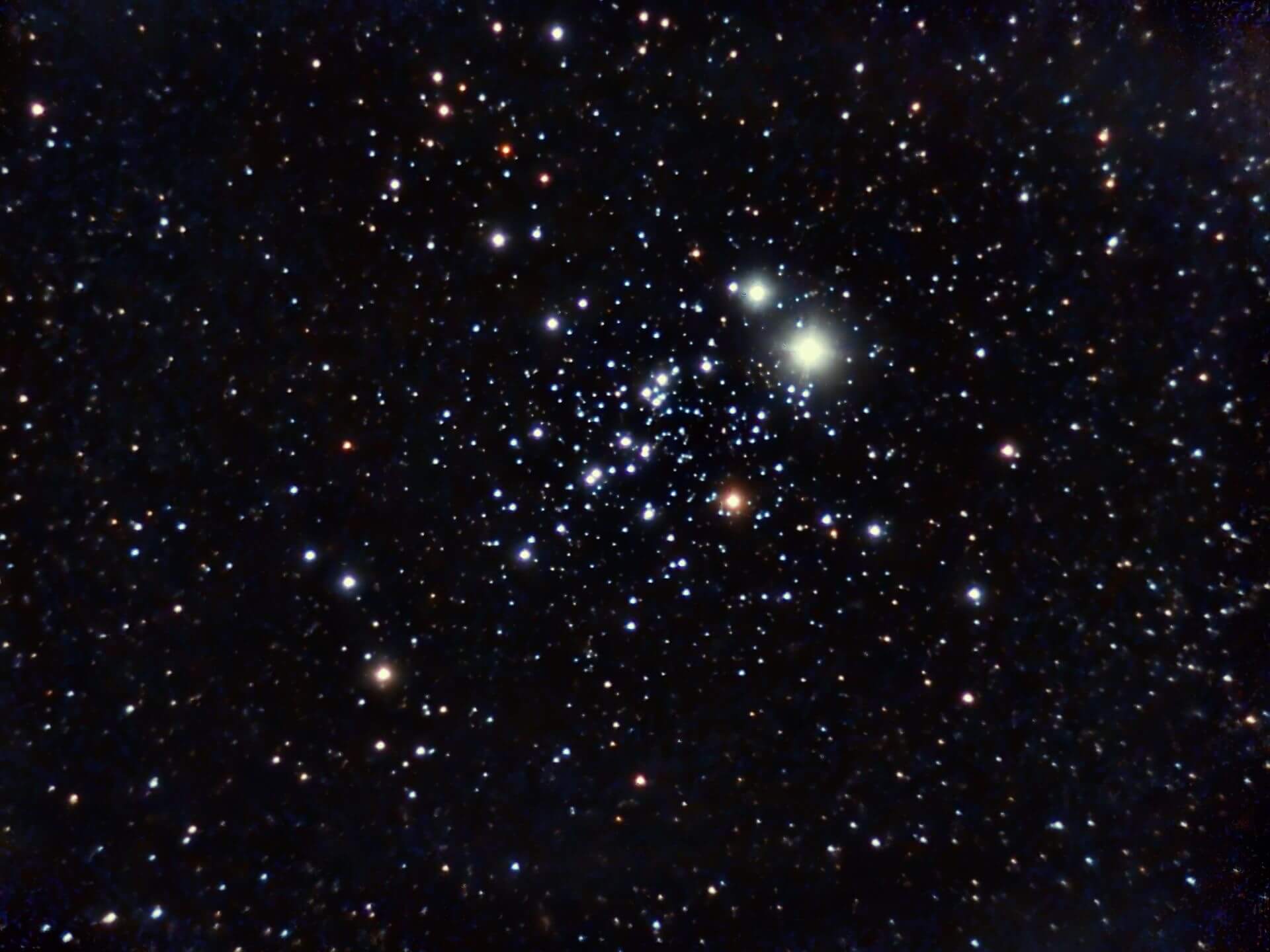
The Owl/E.T. Cluster imaged and processed by Richard Bright.
Mirach’s Ghost
Mirach’s Ghost is an intriguing celestial duo located in the constellation Andromeda. This ethereal pairing consists of Mirach, the brightest star in Andromeda, and a faint, ghostly dwarf galaxy named NGC 404. Take a dark October night to gaze upon Mirach and catch a glimpse of its spectral companion! To spot it, simply use the Unistellar App to GoTo Mirach – you will see NGC 404 lurking next to the bright star it in the field of view.
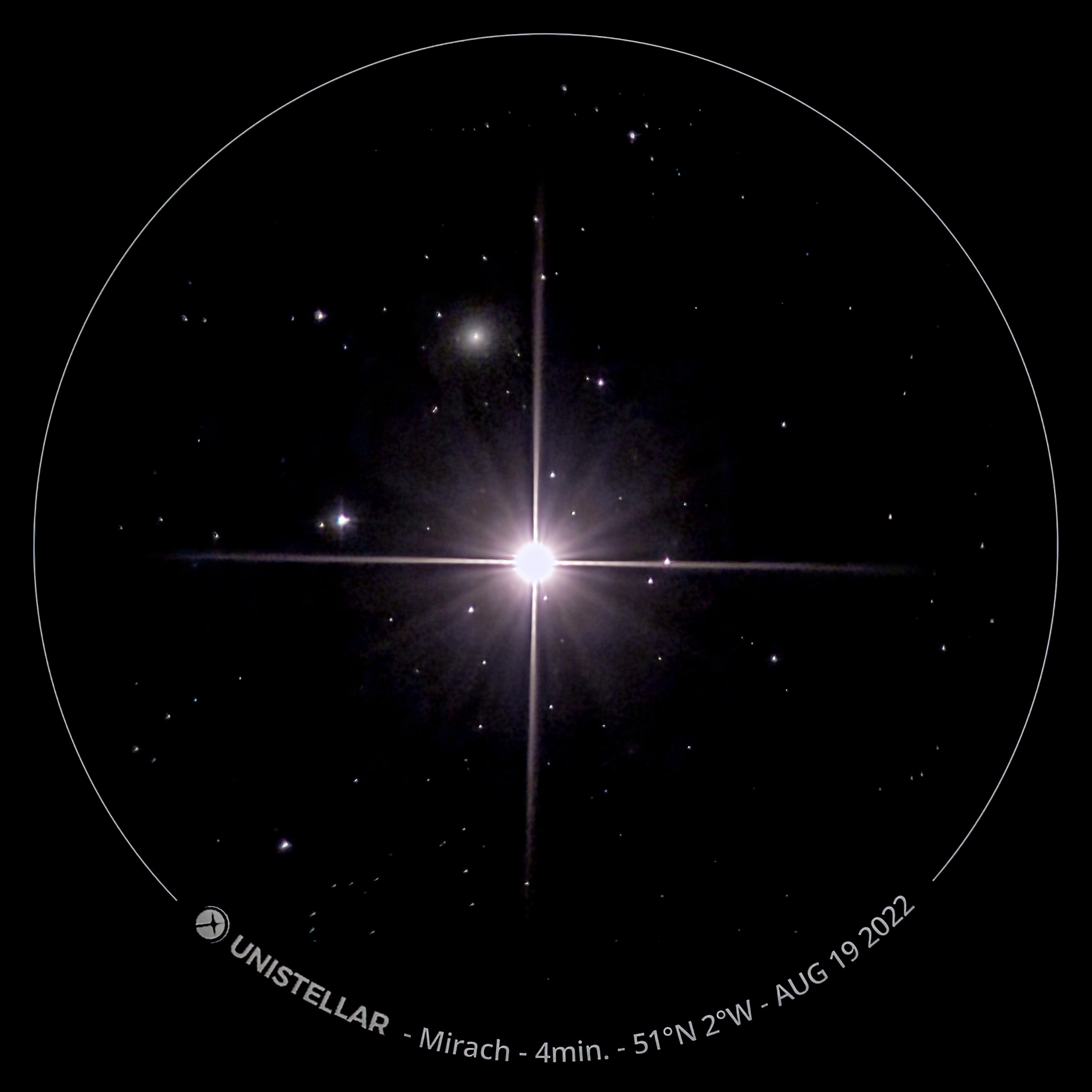
Mirach imaged by David Rowe. You can see the fuzzy-looking Mirach’s Ghost, NGC 404, above the star and to the left!
There’s plenty of other great targets to see this month, creepy or not! From the Northern Hemisphere, check out the White Rose Cluster, often called Caroline’s Rose or the Ghost Cluster. In the Southern Hemisphere you can see the Bat Nebula in the later half of the night!
Challenge Targets
For more challenging targets, find these next few frightening objects! These are dimmer or more diffuse celestial sights that you may need to observe via Enhanced Vision for longer than the All-level targets if you want to experience their full, eerie effects.
Superman Galaxy (NGC 7479)
Not all things Halloween have to be scary! NGC 7479, affectionately dubbed the Superman Galaxy due to its distinctive ‘S’ shape, is a barred spiral galaxy located in the constellation Pegasus. This cosmic superhero showcases its stunning, nearly symmetrical spiral arms, making it a heroic sight in the night sky. Also known as the Propeller Galaxy, it’s perfect for thrill-seeking stargazers in both hemispheres.
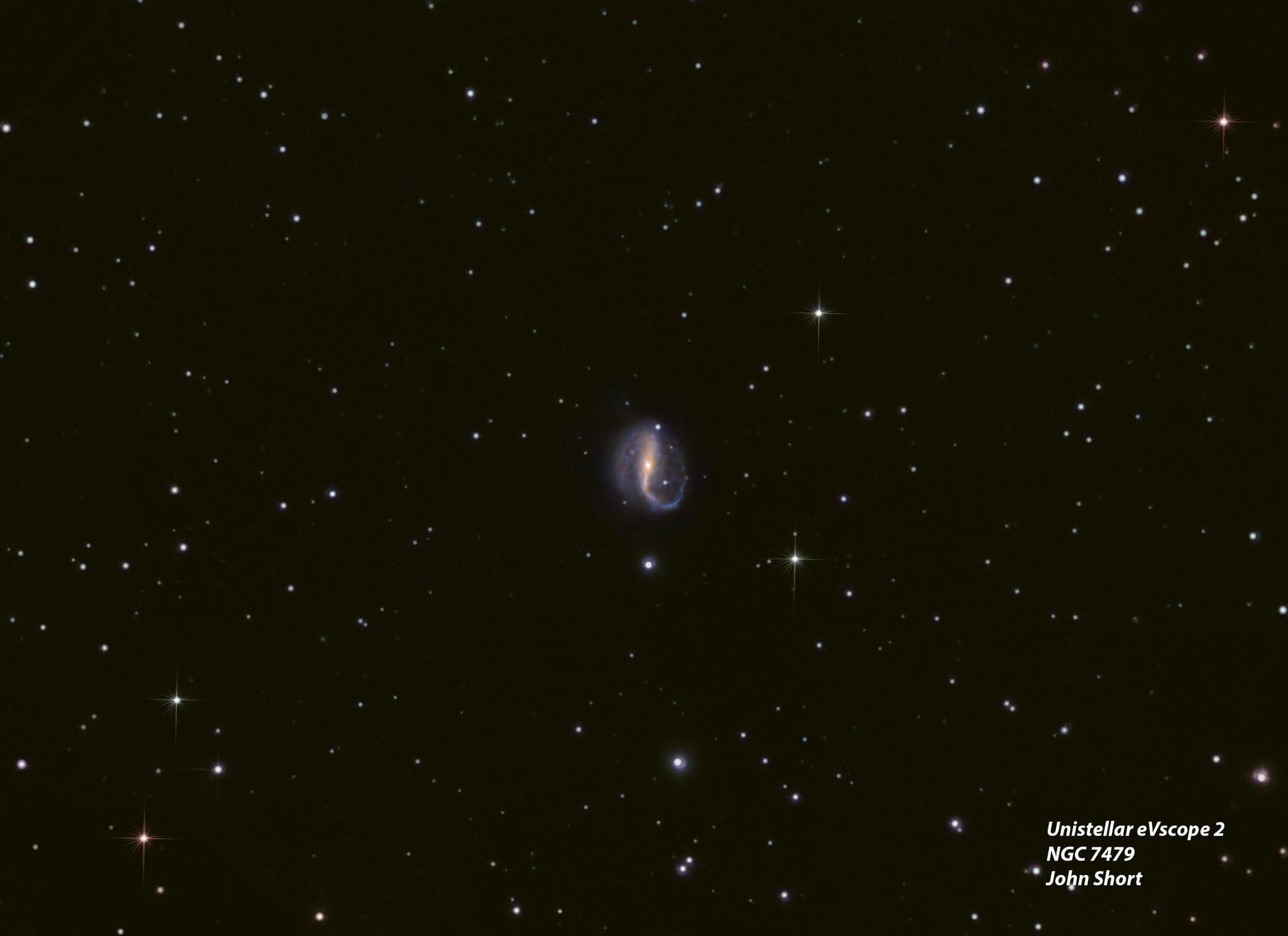
The Superman Galaxy imaged and processed by Unistellar observer John Short.
Skull Nebula (NGC 246)
This ghoulish nebula from the Cetus constellation is a Southern Hemisphere favorite. It’s a planetary nebula, meaning it was born from a dying sun-like star – but that’s not why it’s called the Skull Nebula! Although somewhat faint, a bit of time on target will reveal what some see as the shape of a spooky skull or a ghostly “Pac-Man.”
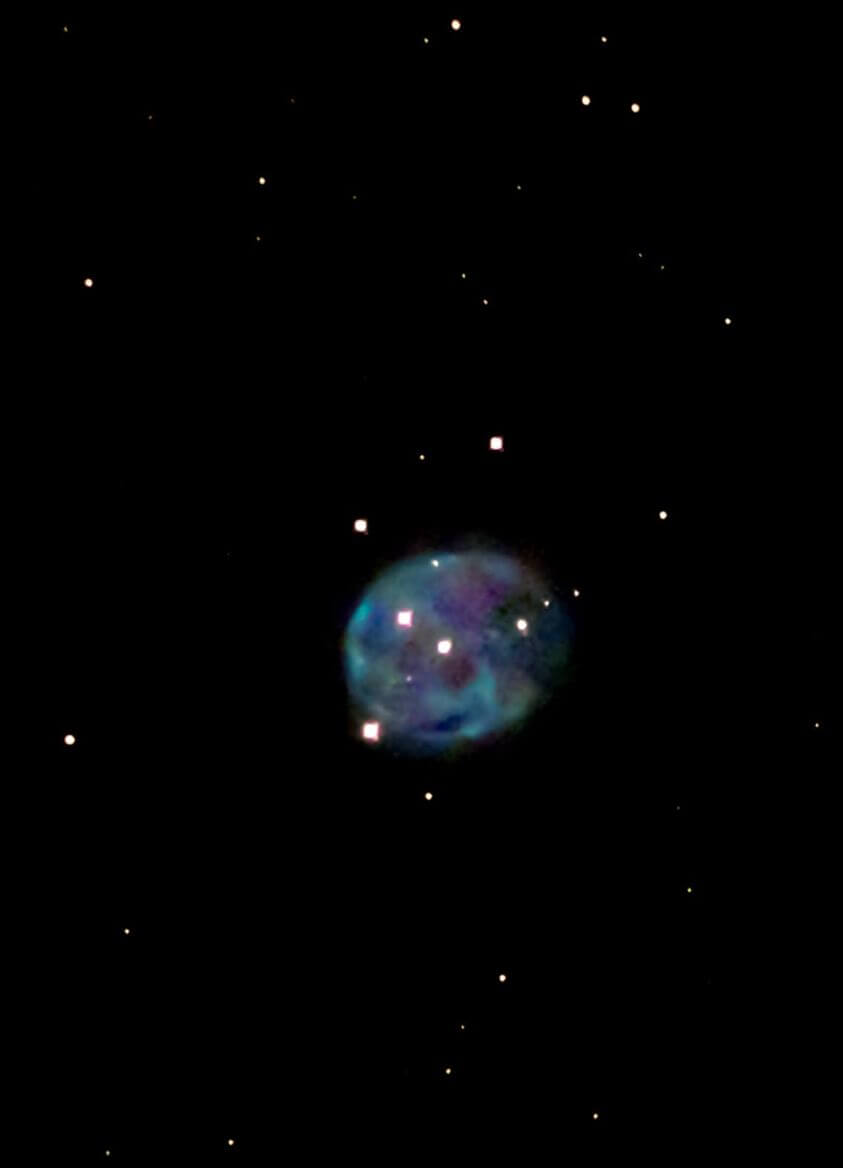
The Skull Nebula, imaged by Unistellar observer David Hein.
The Bubble Nebula (NGC 7635)
The Bubble Nebula, also known as NGC 7635, is an emission nebula found in the constellation Cassiopeia. Although not traditionally terrifying, its ethereal, bubble-like appearance, formed by the stellar winds of a massive star at its center, invokes mystical ambiance fitting for October nights in the Northern Hemisphere. Perhaps they are bubbles from a cosmic cauldron!
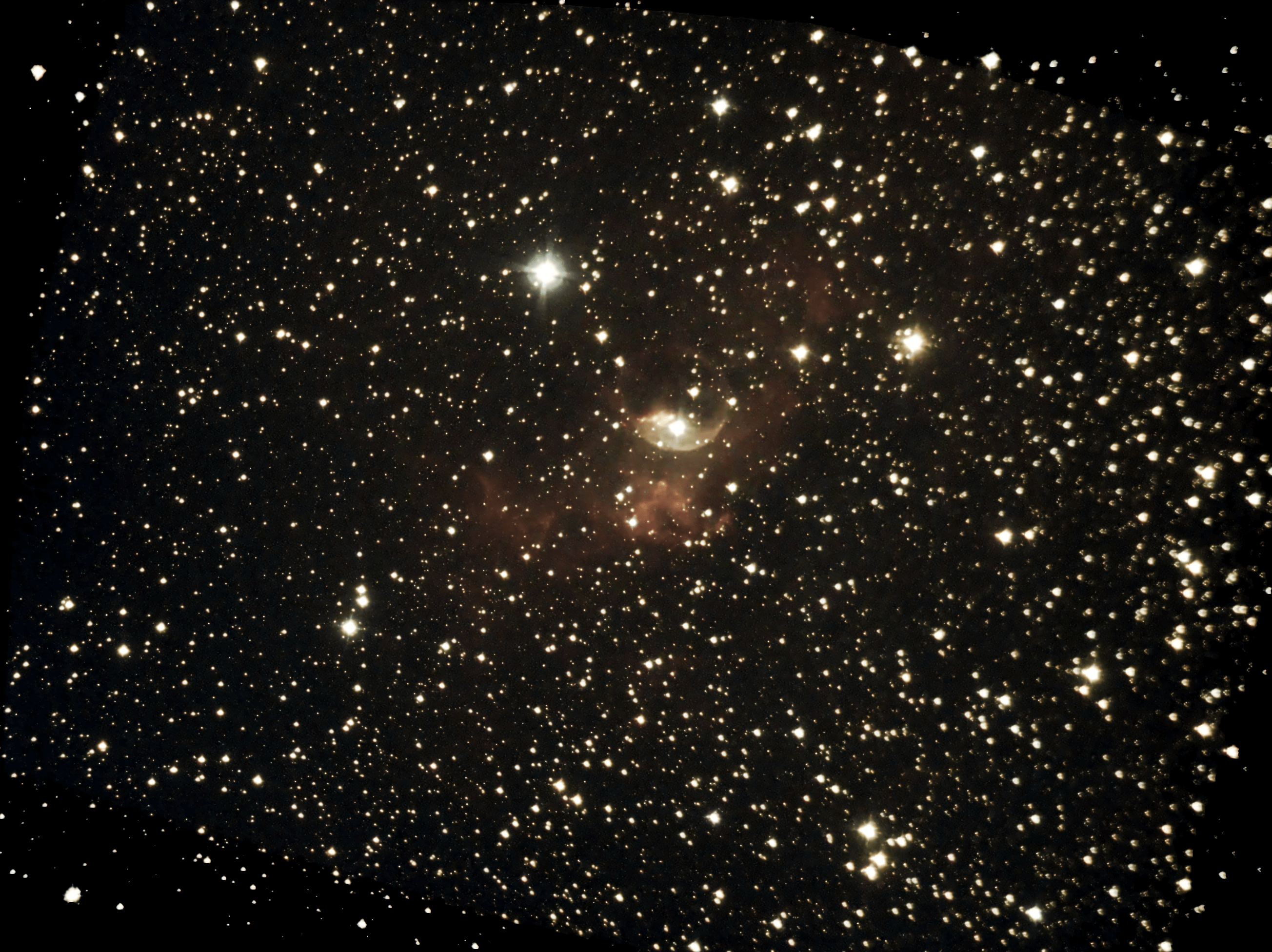
A composite image of the Bubble Nebula by the Unistellar Team.
We encourage you to share your Halloween-time observations and join the conversation through our Facebook, Instagram and Twitter pages. Don’t forget to tag @Unistellar!
If you’d like to send us your observations by email, send them to [email protected].
Clear skies and stay spooky! 🔭
Further readings
3 Reasons to observe this month
Every month, discover three unmissable celestial events to observe with your Unistellar telescope.
Observing Eclipses on Jupiter: Cosmic Spectacles Through a Telescope
The latest Unistellar App Update, version V3.0, is now live. Explore a smooth stargazing experience !
Unistellar Community Included In Multiple Scientific Papers
Did you know Unistellar Citizen Astronomers are often cited in published scientific papers? Find out how you can contribute too!
What Are the Names of All the Full Moons in 2024?
Discover the enchanting names of the full moons in 2024. Delve into the unique character of each lunar spectacle and embrace the allure of the night sky.
New Unistellar App Update: Version 3.0
The latest Unistellar App Update, version V3.0, is now live. Explore a smooth stargazing experience !
What to Observe This November: Open Star Clusters and More
These Halloween deep-sky objects will add some light to those dark, spooky nights. Treats, tricks, and telescopes await!




